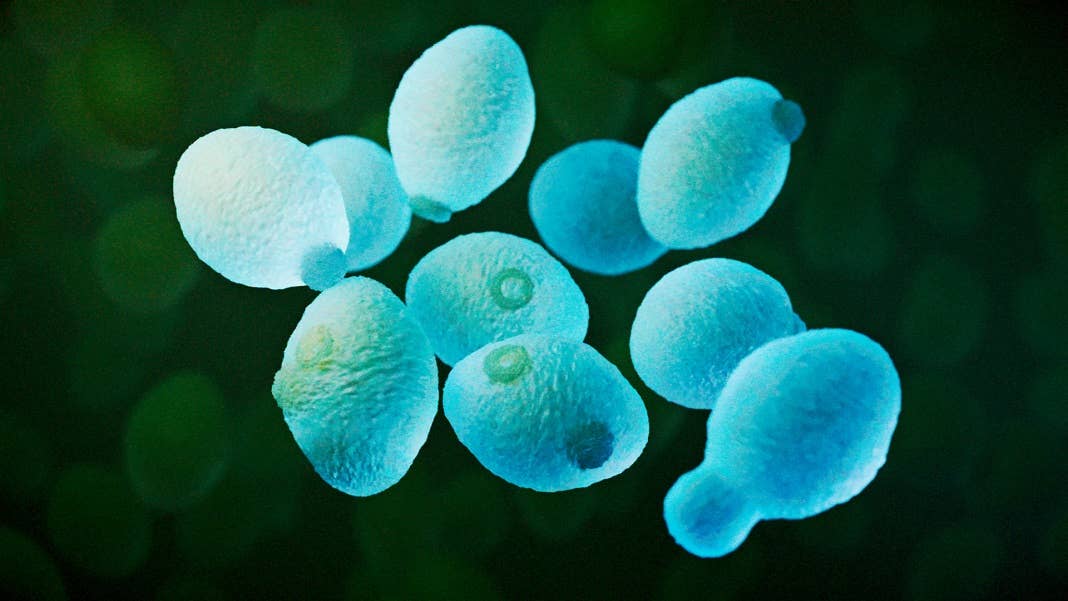Scientists Nearly Doubled Yeast Cells’ Longevity With a Clever Genetic Hack

Share
While human aging is the result of many interconnected processes, one of the most fundamental is the natural deterioration of individual cells. Now researchers have shown that they can use synthetic biology to significantly extend the lifespan of yeast cells.
In recent years, there has been a revolution in our understanding of the biology of aging. This is opening the door to tests that can more accurately assess our “biological age” as well as medical interventions that could help wind back the clock. And the promise is huge—finding ways to delay aging could give the economy a multi-trillion-dollar boost, not to mention improving life satisfaction for millions of people.
But aging isn’t a single linear process, and is influenced by multiple biological pathways. One of the most important is the process by which individual cells in our bodies age and die. Now, researchers at the University of California San Diego have shown that they can manipulate the mechanisms behind cellular aging to boost the lifespan of yeast cells by as much as 82 percent.
“Our work represents a proof-of-concept, demonstrating the successful application of synthetic biology to reprogram the cellular aging process, and may lay the foundation for designing synthetic gene circuits to effectively promote longevity in more complex organisms,” the researchers wrote in a paper published last month in Science.
The work builds on a key discovery the group made in 2020, when they found that yeast cells can age in two distinct ways. Around half of them saw the cell nucleus, which houses the genome, slowly fall to pieces, while the other half saw critical energy-producing structures called mitochondria gradually deteriorate.
It turned out that these two processes were driven by genetic pathways that interacted and were capable of suppressing each other. Random perturbations to the cell fairly early in its life cause one of these processes to gain the upper hand, resulting in a kind of genetic “toggle switch” that commits the cell to one of the two aging pathways.
In their new paper, the researchers decided to replace this toggle switch with a clock-like device called an oscillator that would cause the cell to tick back and forth between its two aging pathways. To do so, they first used computer simulations to understand how the existing aging circuit worked, then used that understanding to engineer a new circuit.
They inserted the circuit into the yeast cells and measured how it affected their aging. The rewired cells flicked back and forth between the two aging states, as expected, without ever committing to one. The researchers found that this led to an almost doubling in lifespan compared to standard cells.
Be Part of the Future
Sign up to receive top stories about groundbreaking technologies and visionary thinkers from SingularityHub.


In a related perspective published in Science, Howard Salis from Pennsylvania State University said the researchers showed that “a road to understanding and controlling cellular aging is to measure the dynamics of these pathways, develop system-wide models, and apply mathematical analysis to pinpoint the tunable knobs and swappable wires that can be manipulated to redirect a cell’s natural dynamics away from aging and toward the maintenance of healthy cell states.”
Translating their work in yeast cells so that it can work in people will take a considerable amount of work, but the researchers say they have already started experimenting with human cells. And Nan Hao, who led the research, told Vice that the approach could eventually lead to viable therapeutics.
“I don’t see why it cannot be applied to more complex organisms,” he said. “If it is to be introduced to humans, then it will be a certain form of gene therapy. Of course it is still a long way ahead and the major concerns are on ethics and safety.”
If those hurdles can be cleared, though, this might represent a fundamental breakthrough in our quest to slow the inevitable march of time.
Image Credit: Ernesto Del Aguila III, NHGRI/NIH
Related Articles

Are Animals and AI Conscious? Scientists Devise New Theories for How to Test This

These Brain Implants Are Smaller Than Cells and Can Be Injected Into Veins

This Wireless Brain Implant Is Smaller Than a Grain of Salt
What we’re reading
